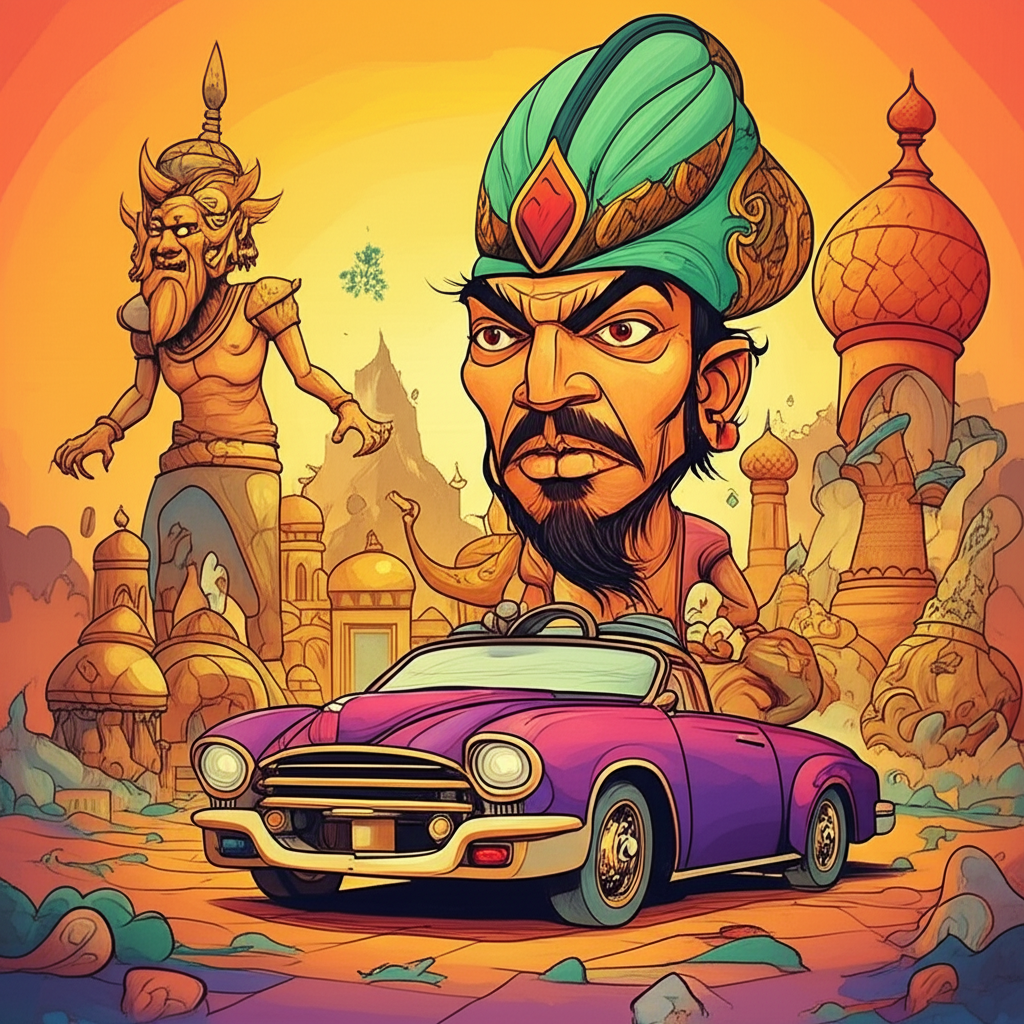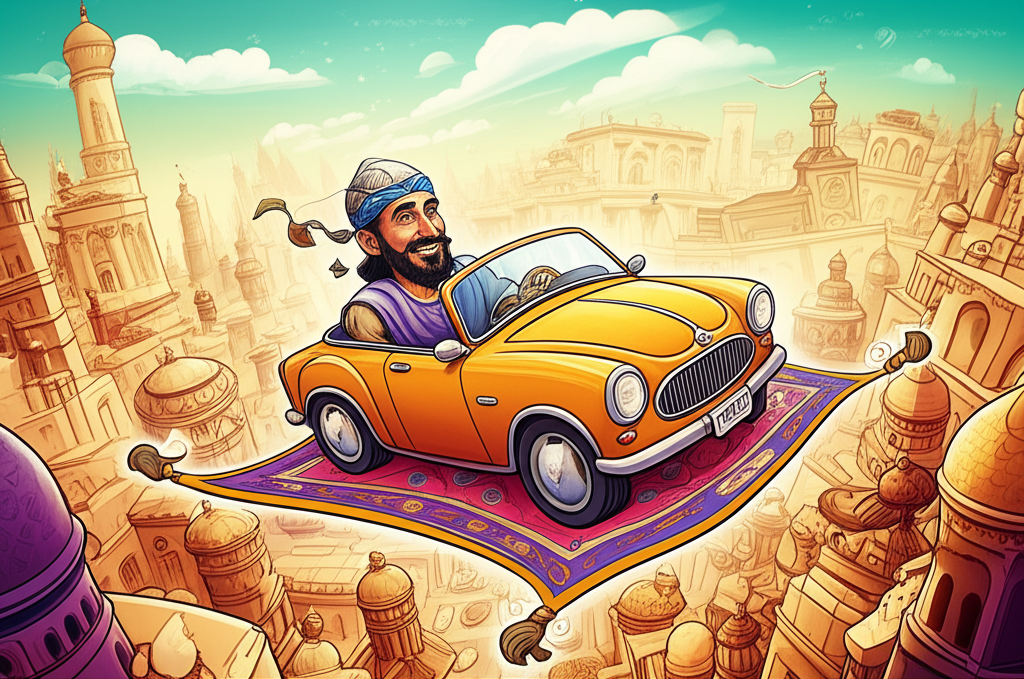
In the vast tapestry of human storytelling, threads of myth and legend are woven with the very fabric of our past. From the sun-baked sands of Arabia, a captivating narrative emerges, a tale whispered across generations by ancient peoples – the legend of the City of Brass. This is not a story of historical fact, nor a divine decree, but a rich piece of folklore, a testament to the enduring power of human imagination and the ways in which our ancestors sought to understand the world around them. It is a story told to illustrate, to entertain, and to reflect the anxieties and aspirations of a bygone era.
The origins of this myth are deeply rooted in the cultural landscape of the medieval Islamic world, a period characterized by burgeoning trade routes, vast empires, and a profound engagement with the natural world. The environment was one of stark contrasts: scorching deserts stretching to the horizon, punctuated by oases of life and vibrant, bustling cities. In such a world, where survival was often a precarious dance with the elements, and where the unknown loomed large in the desolate expanses, it was natural for people to imbue the landscape with supernatural significance. Their worldview was one where the divine, the jinn, and the extraordinary were not necessarily separate from the everyday, but often intertwined. The desert, with its shifting sands, mirages, and extreme temperatures, was a place ripe for speculation, a canvas upon which the human mind projected its deepest fears and wildest dreams.
Central to the legend of the City of Brass is the figure of Iblis, a complex entity often understood within Islamic tradition as a jinn who defied God’s command and became a symbol of pride and rebellion. In this myth, Iblis is not presented as a deity to be worshipped, but as a powerful, ancient being whose existence and actions are part of the narrative’s imaginative framework. His symbolic attributes lie in his defiance, his ambition, and his ability to command vast forces, mirroring the human struggle with temptation and the allure of power. He represents a primal force, a counterpoint to order and divine will, and his creations are born from this rebellious spirit. The City of Brass itself is often depicted as his ultimate creation, a monument to his hubris.
The narrative of the City of Brass typically unfolds as an epic quest, a grand adventure undertaken by valiant heroes seeking this legendary metropolis. These stories, often found within collections like One Thousand and One Nights, paint a vivid picture of a city built not of stone and mortar, but of molten brass, gleaming under an eternal, unnatural sun. It is said to have been constructed by Iblis and his legions of jinn, a testament to their immense power and dark artistry. The city was not merely a physical place; it was a fortress, a prison, and a place of unimaginable riches and terrifying guardians.
Imagine, if you will, a band of intrepid explorers, driven by tales of unparalleled wealth and arcane knowledge, setting forth into the unforgiving desert. Days turn into weeks, the sun beating down relentlessly, the sand a shimmering, endless sea. They navigate by the stars, their water dwindling, their hope flickering like a distant flame. Then, on the horizon, it appears – not a mirage, but a city, its walls a dazzling, blinding gold. The air around it hums with an unseen energy. As they approach, they discover that the city is not merely built of brass, but is a living, breathing entity of molten metal, its structures shifting and reforming. They encounter formidable challenges: enchanted beings, riddles posed by ancient sentinels, and the pervasive sense of an ancient, malevolent intelligence watching their every move. The story often culminates in a struggle to escape, to plunder its treasures, or to break its cursed enchantment, a test of courage, wit, and perhaps, faith.
The symbolism embedded within the City of Brass legend is multifaceted. The molten brass itself can be interpreted as representing the destructive power of unchecked ambition and the corrosive nature of greed, themes that resonate throughout human history. The city’s isolation and its magical defenses speak to the idea of forbidden knowledge and the dangers of venturing into realms best left undisturbed. Iblis’s role as its creator can symbolize the allure of worldly power and the consequences of straying from a righteous path. For the ancient peoples who told these tales, the City of Brass might have represented the ultimate temptation, a place of immense power that could be both alluring and perilous, a stark reminder of the struggles between good and evil, divine will and earthly desires. It could also have served as a cautionary tale about the ephemeral nature of earthly possessions and the potential for hubris to lead to ruin.
In the modern era, the legend of the City of Brass continues to capture the imagination. It has been reinterpreted and adapted in countless forms of literature, from fantasy novels that draw inspiration from its fantastical elements to scholarly works that analyze its cultural significance. In popular culture, its essence can be found in video games where players embark on quests for legendary treasures in fantastical locales, or in movies that explore themes of forbidden cities and ancient curses. The City of Brass, as a concept, has become a shorthand for a place of wonder, danger, and immense, often dangerous, power.
It is crucial to reiterate that the City of Brass is a product of human storytelling, a myth born from the rich cultural soil of ancient traditions. As Muslims, we recognize that the sole Creator and Sustainer of all existence is Allah. These stories, while fascinating, are not to be taken as factual accounts of divine intervention or as prescriptions for belief. Instead, they offer a window into the minds of our ancestors, a glimpse into their understanding of the world, their fears, and their hopes. The enduring appeal of such legends lies in their ability to transport us to different times and places, to ignite our sense of wonder, and to remind us of the power of human creativity and the timeless art of storytelling that binds us to our cultural heritage.





